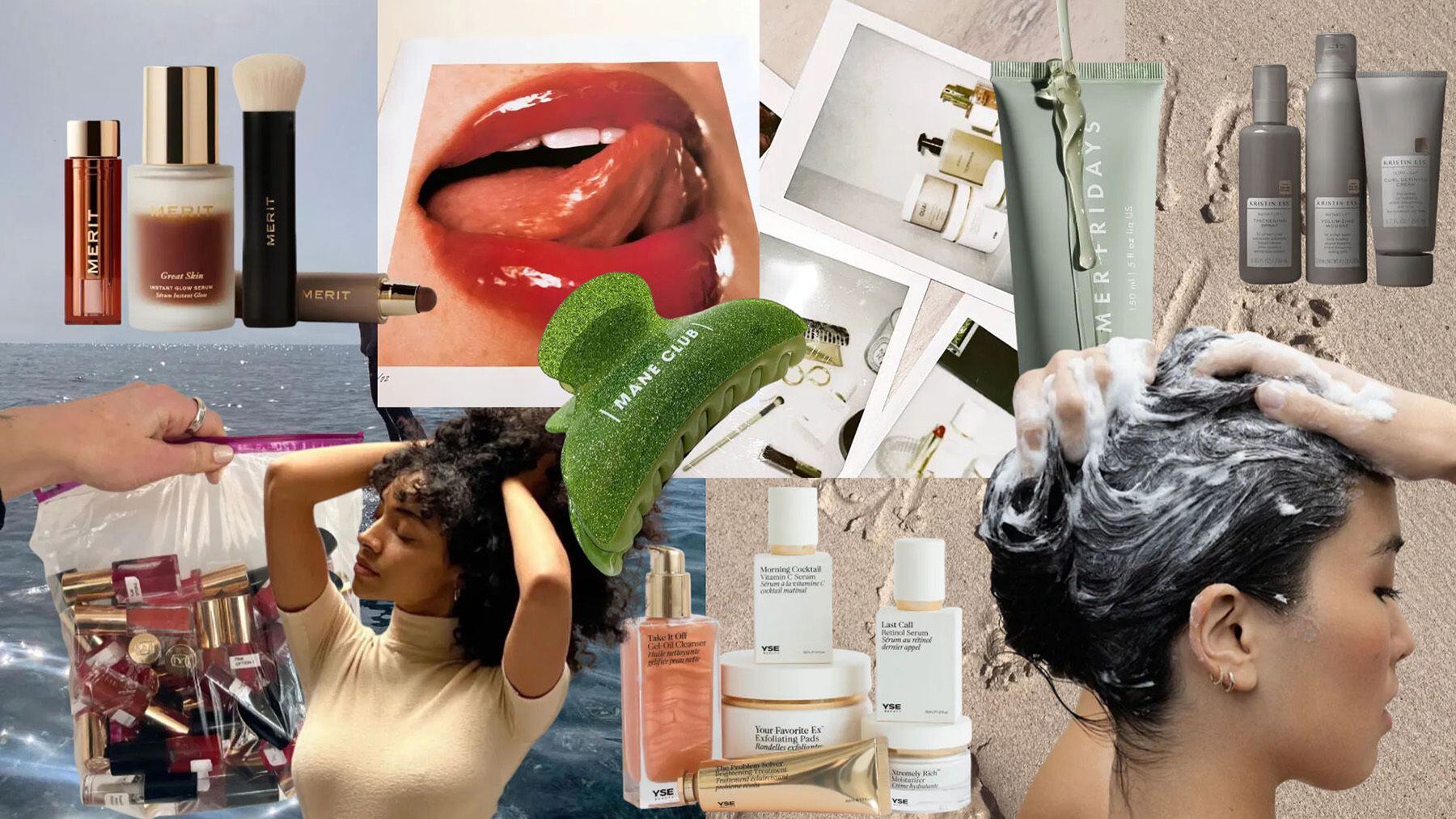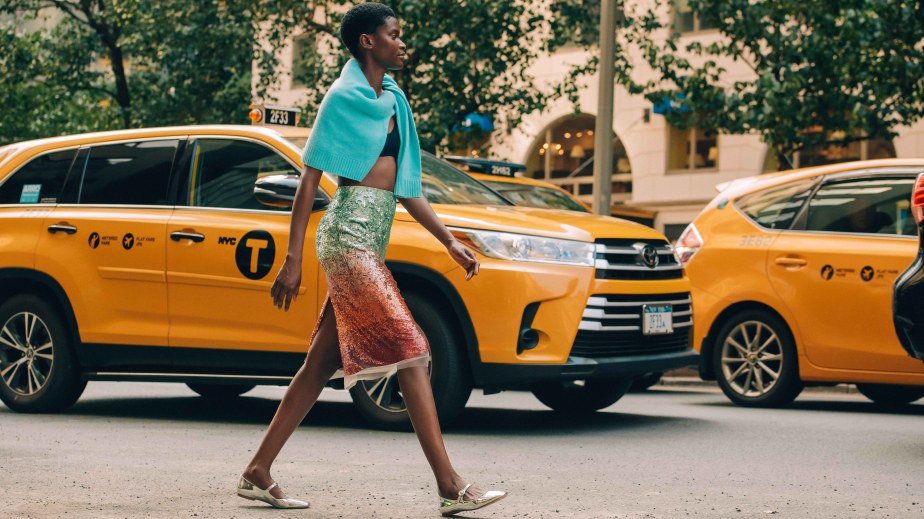The Brand-Building Machines Behind Beauty’s Hottest Labels
Behind many of beauty’s buzziest brands are unseen machines powering operations, sourcing, manufacturing, production, distribution and more. It may sound like the Illuminati, but it’s no conspiracy — they’re beauty incubators.
Though specifics differ, overall, incubators serve as a launch pad for brands, offering would-be founders a brand-building shortcut by providing support in the form of data, capital connections to wholesalers and other industry expertise. They oftentimes team up with a celebrity or influencer to front the brand, providing much of the backend with the hope that the association will help sell product. Brands to come out of incubators include Tracee Ellis Ross’ hair care line Pattern and Kristin Ess Hair.
The surge of indie beauty brands in the 2010s, coupled with the rise of influencers and social media, spurred the emergence and acceleration of the incubator concept. Independent brands became beauty’s most talked-about, holding their own against legacy labels and at times, going on to be acquired for nine or even 10-figure sums. That momentum helped drive excitement amongst investors and entrepreneurs, making building beauty brands a more appealing concept than ever.
Today, it seems everybody is incubating. There are standalone incubators like Slate (responsible for Gen-Z geared fragrance like Hue by Hayley Kiyoko) and Amyris (which owns Biossance and Onda Beauty), in-house incubators at conglomerates including P&G, Unilever and L’Oréal as well as talent agency CAA.
But with that growth comes new pressure. Now, it takes more than pairing a famous face to build a successful brand. Failure to differentiate, add value or set expectations with partners has proved fatal for incubators and their brands.
In January, Forma Brands, the incubator behind Ariana Grande’s R.E.M. Beauty and influencer-favourite makeup brand Morphe, filed for bankruptcy following several unfruitful tie-ups with influencers like James Charles and Emma Chamberlain. Now, it’s facing accusations from Shelby Wild, the founder of Forma-owned hair care label Playa, that the company didn’t inadequately support Playa after it was acquired in 2020. Incubator-created, influencer-fronted brands like TikTokker Addison Rae’s Item Beauty, which was built by the incubator Madeby Collective, was initially envisioned as a seamless way to translate her large online audiences to sales. But shortly after it debuted in 2021, Item Beauty was pulled from shelves, further showing the vulnerabilities of the influencer-incubator model.
“At the beginning of Covid, it was truly like a renaissance … but this is not the easy money thing a lot of people think it is,” said Dustin Cash, co-founder and chief executive of the LA-based incubator SOS Beauty that helped create Jen Atkins’ Ouai. Ouai later sold to P&G in 2021.
Still, incubators have the potential to generate successes when they marry a strong founder story and a resonant brand purpose with an incubator’s technical expertise in areas like manufacturing, supply chain and distribution. And given the sheer number of incubators that exist today, there will be plenty of tinkering to determine how to create the next Fenty Beauty (which was created by Kendo, LVMH’s beauty incubator).
“If you want to become a visible, global brand faster, an incubator is a good vehicle,” said Audrey Depraeter-Montacel, Accenture luxury and beauty lead.
How Do Beauty Incubators Work?
Incubators usually have a focus: the mass market, celebrity partnerships, a particular demographic or underserved community. Beach House Group is known for celebrity brands; it created “Stranger Things” actress Millie Bobby Brown’s Florence by Mills line before she bought the line back in 2021. A-Frame Brands also takes the celebrity approach, but uses talent to reach underserved or overlooked consumer groups: John Legend’s skin care line Loved01 is designed for melanin-rich skin. New York-based incubator Slate Brands launches labels, like its streetwear-inspired Insanely Clean skincare, to appeal to Gen-Z.
“They have expertise and other brands, so they know quickly how to get some traction and grow the business,” Depraeter-Montacel said. “It’s a strong execution machine.”
The process for how projects originate and are structured differ. A founder can approach an incubator with a concept already in mind, or an incubator can look for gaps in the market and build a brand to fill that space. Sometimes, a celebrity’s desire to launch something is made known, or an incubator approaches an agent to pitch ideas for clients.
Terms relating to control can vary by incubator and by project, but typically, contracts with founders last between 18 to 24 months, said Eric Weiss, Accenture’s M&A director. Often the incubator takes an equity stake in the brand, and, especially amongst conglomerate-owned incubators, establishes terms like the right of first refusal for buying the brand. Other times, there’s a revenue share or royalty agreement. Some partners invest, and others are purely operational. It typically takes around two years to get a brand off the ground, said Cash. Incubators can sometimes launch a handful of brands a year. Some incubators are leaning into acquisition to drive growth. Amyris, which created Rosie Huntington-Whiteley’s makeup like Rose Inc. and Jonathan Van Ness’ hair care line JVN, picked up Onda Beauty last year and Waldencast bought Milk Makeup in 2021.
The author has shared a Flourish data chart.You will need to accept and consent to the use of cookies and similar technologies by our third-party partners (including: YouTube, Instagram or Twitter), in order to view embedded content in this article and others you may visit in future.
The author has shared a Flourish data chart.You will need to accept and consent to the use of cookies and similar technologies by our third-party partners (including: YouTube, Instagram or Twitter), in order to view embedded content in this article and others you may visit in future.
What Are The Pros And Cons To The Incubator Model?
In today’s beauty landscape, smaller labels are driving innovation and excitement. But it’s still the beauty giants that have the standing relationships with retailers as well as knowledge of beauty’s supply chain and manufacturing processes. Incubators bridge the gap between the two.
For conglomerates, which have historically mixed hit-rates with young brands, internal incubators give them a space to experiment and glean insight into small brands’ strategies and what’s going on in the market, without risking a lot of capital, said Weiss. Rather than create their own brands, conglomerates will sometimes take a minority stake in a young brand, and provide strategic guidance: Estée Lauder’s New Incubation Ventures, launched in 2021, has invested in men’s nail polish brand Faculty and fragrance line Vyrao.
Standalone incubators, meanwhile, can act quickly, and fill market gaps independent brands wouldn’t have the scale to address on their own, said Oshiya Savur, Maesa’s chief brand officer. In March, Maesa launched Finer’y, a luxury-inspired mass fragrance line at Target. Maesa’s supply chain know-how and access to capital allowed the label to launch in a big box retailer and price products below $30, she said.
“When you’re a [big] player it’s hard to justify launching niche ideas, because they could never catch on to the volume thresholds,” said Savur. “But as an incubator, when you have the right reason or partnerships, you’re able to take those risks.”
But as Forma Brands’s trajectory shows, there are potential downsides. Incubators have a reputation for plugging-and-playing with trends, or slapping faces onto products without much thought or strategy. The term incubator can, at times, carry “almost a scary connotation,” said Cash.
Brands and incubators alike should be wary of uneven expectations around wholesale entry, product expansion, creative decisions and more, which can cause tension down the line. For example, Kristin Ess, founder of her namesake hair care line, launched a suit in December against parent company Maesa alleging it misled her about retail plans and “pushed Kristin Ess Hair into down-market retailers without consulting [her] first.”
The market is undergoing a bit of a course correction after it was saturated with celebrity and influencer brands, said Daniel Landver, chief executive of Digital Brand Products, a branch of UTA-owned Digital Brand Architects, which helps influencers broker product deals and partnerships. His team is focused on doing fewer, but better deals.
“Done right, it’s phenomenally successful, done poorly it’s a major failure,” said Landver. “Now, people see the opportunity and are strategic and discerning.”
After watching past big bets not pay off as expected, strategics, investors and conglomerates, are also becoming more selective, said Charlene Valledor, SOS Beauty co-founder. Both incubators and their brands will have to do more to prove they’re adding something valuable to the crowded beauty space.
“If you don’t have a strong reason for being, it’s not going to stick,” said Cash.

:quality(70)/cloudfront-eu-central-1.images.arcpublishing.com/businessoffashion/UF34UWNNL5CFTALUSAET44524E.jpg)


:quality(70)/cloudfront-eu-central-1.images.arcpublishing.com/businessoffashion/DUBNHR6LXJFT7DE25T4PFHXWOE.jpg)

